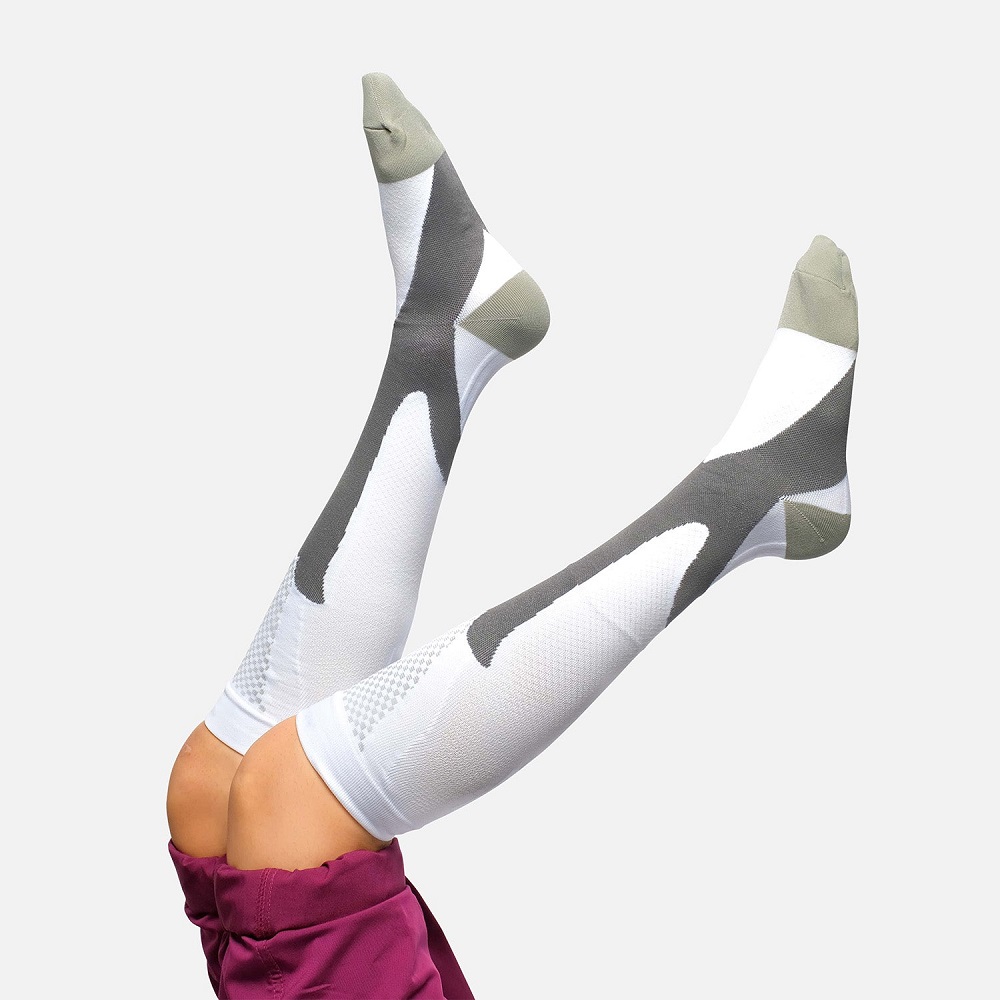What Are Compression Socks?
Definition and Purpose of Compression Socks
Compression socks are specialized garments designed to improve blood circulation in the legs. They apply gentle pressure to the legs, promoting better blood flow from the feet to the heart. Women often wear them to reduce swelling, prevent discomfort, and support overall leg health. These best compression socks for women are widely used for medical, sports, and daily activities, improving comfort and mobility.
How Compression Socks Work
Compression socks work by applying graduated pressure to the legs. This pressure is strongest at the ankle and decreases as it moves upward. The compression helps push blood back to the heart and prevents blood pooling in the lower legs. This mechanism reduces swelling, supports vein function, and enhances overall leg health. For women, these benefits are especially helpful during long hours of standing, traveling, or physical activity.
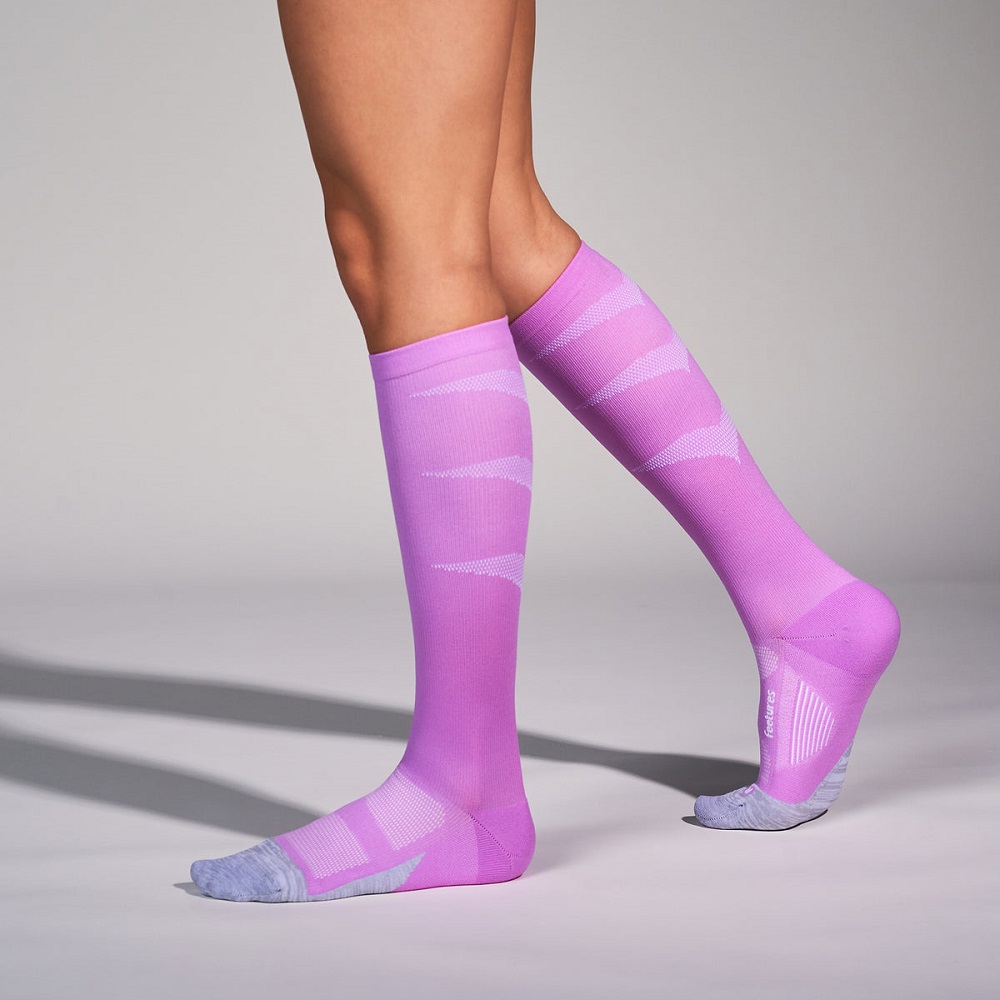
Benefits of Compression Socks for Women
Best compression socks for women offer numerous benefits tailored to women’s health and daily needs. They are not just for medical purposes but also enhance comfort, mobility, and overall leg health. Below are some key benefits:
Improving Circulation and Reducing Swelling
Compression socks improve blood flow in the legs by applying graduated pressure. This helps blood move efficiently from the feet back to the heart. Better circulation reduces swelling, especially during long hours of standing or sitting. Women who travel often or work desk jobs can use compression socks to prevent discomfort and leg fatigue.
Alleviating Leg Pain and Fatigue
For those dealing with leg pain or tiredness, best compression socks for women provide much-needed relief. They ease muscle soreness by supporting veins and improving blood flow. Whether you face pain due to standing long hours, physical activity, or medical issues, these socks can help. Women recovering from injuries or surgeries can also experience quicker relief with the support these socks offer.
Supporting Active Lifestyles and Recovery
Women leading active lives, such as athletes or fitness enthusiasts, benefit significantly from compression socks. They enhance muscle oxygenation, reduce cramps, and lower post-workout soreness. Additionally, compression socks speed up recovery after intense exercise or physical strain. For women managing busy lifestyles, they provide both comfort and support, ensuring better performance and quicker recovery. This benefit extends to regular day-to-day activities as well.
Compression socks are practical for women from all walks of life. They improve circulation, reduce pain, and support recovery, making them an essential tool for leg health.
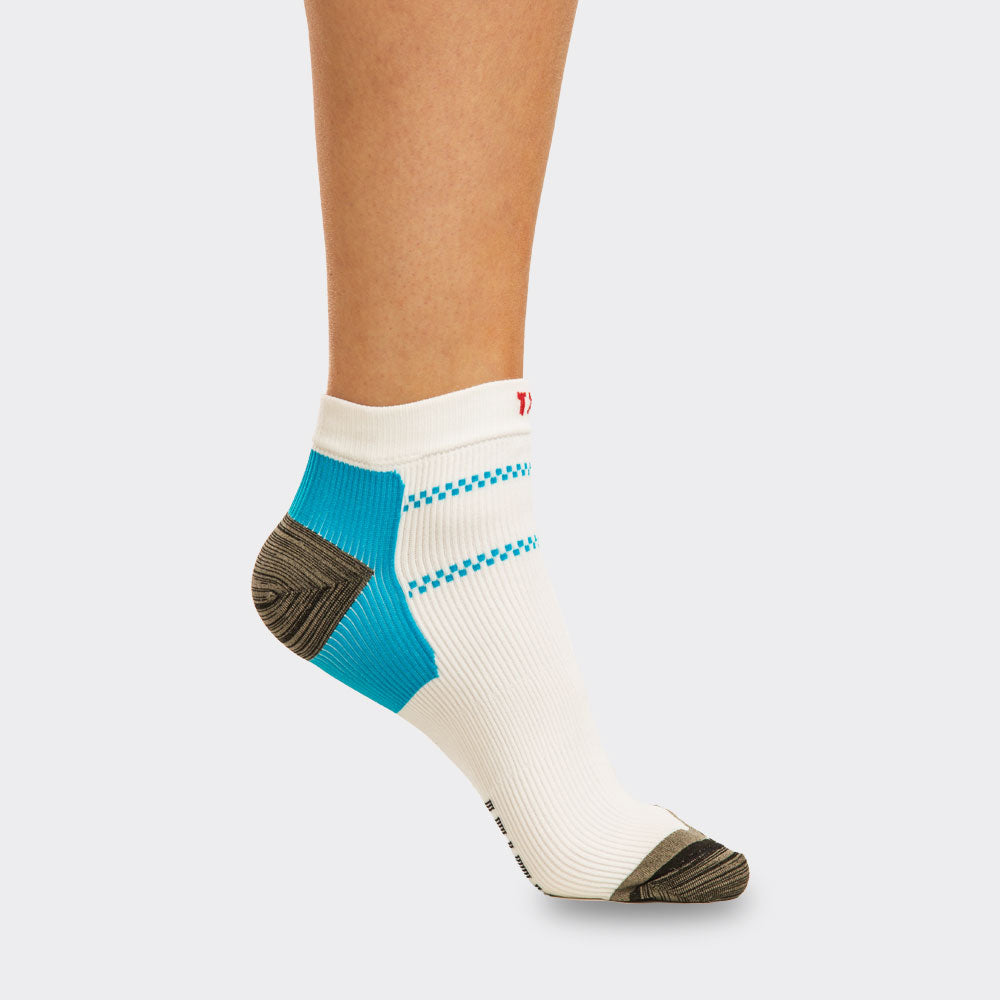
Key Features to Look for When Choosing Compression Socks
Selecting the best compression socks for women requires careful consideration of several key features. These factors help you choose socks that suit your needs, ensure comfort, and offer maximum effectiveness. Below are the essential features to evaluate:
Compression Levels Explained
Compression socks are available in varying pressure levels, measured in millimeters of mercury (mmHg). The choice of compression level depends on your specific needs:
- Mild Compression (8-15 mmHg): Ideal for general comfort during daily activities.
- Moderate Compression (15-20 mmHg): Suitable for travel, mild swelling, and occasional discomfort.
- Firm Compression (20-30 mmHg): Recommended for more significant leg issues, such as varicose veins or recovery.
- Extra-Firm Compression (30-40 mmHg): Meant for severe medical conditions under professional guidance.
Understanding these levels ensures you pick socks that match your lifestyle and requirements.
Material and Fabric Considerations
The material of compression socks plays a crucial role in comfort and durability. Consider the following:
- Breathable Fabrics: Look for materials like nylon or spandex for ventilation and moisture-wicking.
- Durable Construction: Quality fabrics resist wear and tear for longer-lasting use.
- Softness: Choose socks that feel comfortable against the skin, as you may wear them for hours.
- Flexibility: Stretchy fabrics ensure even compression and proper fit.
Prioritizing fabric quality ensures your socks are comfortable and supportive.
Length and Fit Options
Compression socks come in various lengths and fits to cater to different preferences and needs:
- Knee-High Socks: Best for improving circulation below the knee and easy to wear daily.
- Thigh-High Socks: Offer extended support for the upper legs and prevent swelling above the knees.
- Full-Length Stockings: Ideal for maximum support, including the lower and upper legs.
Proper fit is vital for effectiveness. Measure your calf circumference and leg length before purchasing to ensure a snug yet comfortable fit.
Understanding these features helps you select compression socks that meet your health and lifestyle needs effectively.
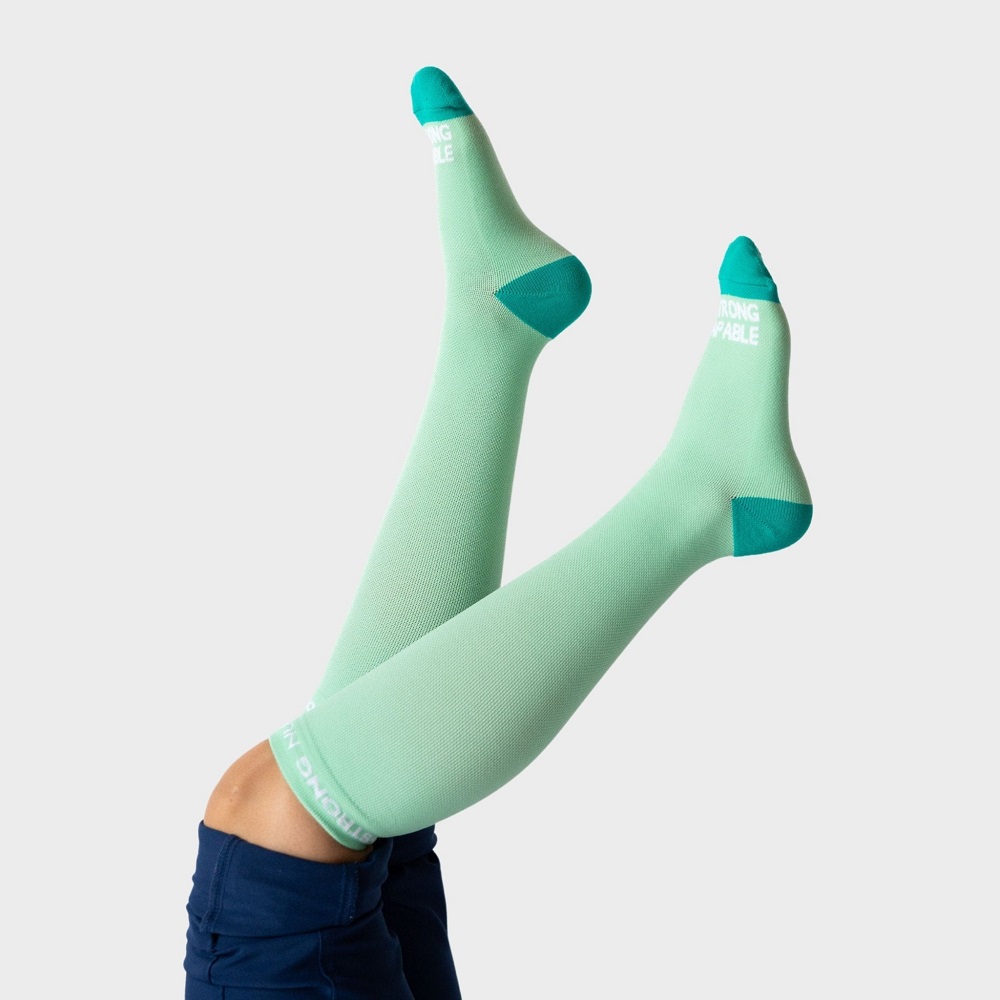
Top Scenarios and Activities Requiring Compression Socks
Compression socks serve a wide range of purposes for women in daily life. They offer specific benefits for various scenarios, ensuring both comfort and improved leg health. Here are the top activities and circumstances where compression socks are particularly useful.
Everyday Use for Work and Travel
Many women experience leg discomfort during prolonged standing or sitting. Compression socks improve circulation and prevent swelling during work hours or commutes. For women in sedentary jobs, they help reduce leg fatigue and keep blood moving efficiently. Frequent travelers find these socks essential for long flights or road trips, avoiding swelling caused by immobility. Whether at work or while traveling, compression socks are practical for maintaining leg health.
Sports and Fitness Applications
Compression socks are popular among women with active lifestyles. Athletes use them to boost performance and reduce muscle soreness during workouts. Fitness enthusiasts benefit from compression socks by minimizing cramps and enhancing recovery after exercise. They support muscle oxygenation, reduce fatigue, and help women maintain stamina during physical activities. Compression socks are especially effective for high-impact sports and intensive training sessions.
Managing Medical Conditions such as Varicose Veins
Women dealing with specific medical conditions, like varicose veins or chronic venous insufficiency, find compression socks highly beneficial. These socks strengthen vein function and prevent blood pooling in the lower legs. They reduce discomfort and improve mobility for conditions requiring consistent leg support. For pregnant women or those dealing with circulatory issues, compression socks are a reliable solution. Choosing proper compression levels ensures effective relief for medical needs.
Popular Types of Compression Socks for Women
Choosing the right type of compression socks involves understanding different options available for women. Each type caters to varying preferences and needs, combining functionality and style. Below are the most popular types of compression socks women can choose from.
Open-Toe vs Closed-Toe Socks
Compression socks come in open-toe and closed-toe styles. Open-toe socks are ideal for better airflow and comfort during hot weather. They also work well for women with toe issues like bunions. Closed-toe socks provide full coverage and are a better option for colder climates. They offer extra support and suit daily or medical use effectively. Your choice depends on your comfort preference and specific needs.
Knee-High, Thigh-High, and Full-Length Options
Compression socks vary in length, providing different levels of support:
- Knee-High Socks: These are practical for everyday use and improve circulation below the knee. Women often wear them during long hours of standing or sitting.
- Thigh-High Socks: These provide support extending up to the thighs, reducing swelling and improving upper leg circulation.
- Full-Length Stockings: Offering full leg coverage, these are ideal for maximum support and medical conditions requiring extensive compression.
Selecting the appropriate length ensures optimal comfort and effective relief.
Fashionable Designs and Colors
Compression socks no longer compromise style for comfort. Manufacturers offer fashionable designs and colors tailored to women’s tastes. Patterns, vibrant colors, and trendy styles provide women with fashionable options to suit their wardrobes. Whether for work, sports, or casual settings, you can find compression socks that blend functionality with style. Adding flair to your leg health care can make wearing compression socks a more enjoyable experience.
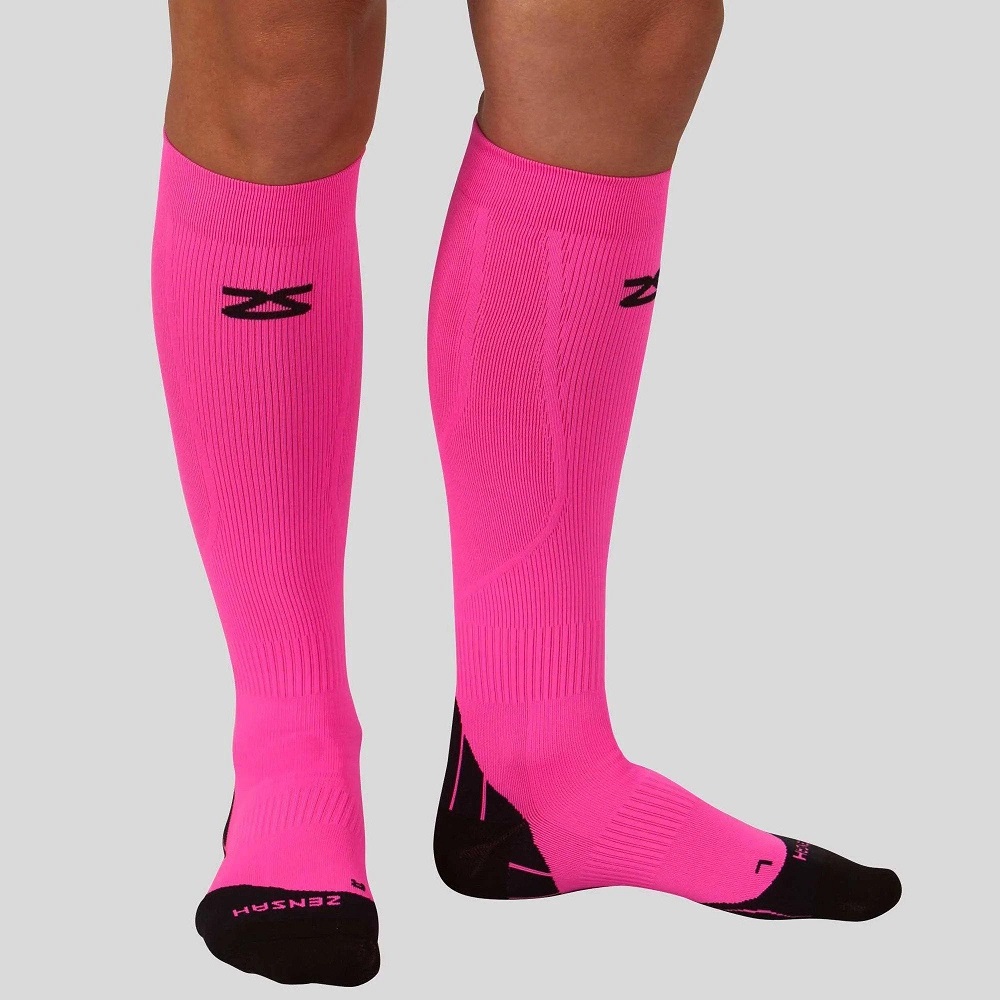
Tips for Choosing the Right Compression Socks
When selecting the best compression socks for women, attention to detail is crucial. Proper sizing and care are key to maximizing their effectiveness. Below are some essential tips to guide your choice and maintenance process.
Proper Measurements for a Perfect Fit
- Check Your Calf Circumference: Measure the widest part of your calf for precise sizing.
- Measure Leg Length: For knee-high socks, measure from your heel to the knee.
- Refer to Size Charts: Always use the manufacturer’s size guide for accurate selection.
- Avoid Ill-Fitting Socks: Tight socks may cause discomfort, while loose ones reduce effectiveness.
Proper measurements ensure your compression socks provide optimal support and comfort.
How to Choose Based on Your Needs
- For Daily Activities: Choose mild compression (8-15 mmHg) for general comfort and light use.
- For Medical Issues: Opt for firmer compression (20-30 mmHg) for varicose veins or swelling.
- For Travel: Moderate compression (15-20 mmHg) prevents swelling during long flights or drives.
- For Sports: Athletes benefit from socks enhancing muscle recovery and reducing cramps.
Understand your specific needs to pick the right level of compression effectively.
Maintenance and Care for Longevity
- Hand Wash If Possible: This protects the elasticity and quality of the fabrics.
- Use Mild Detergent: Harsh chemicals can damage the resistant fibers.
- Avoid Machine Drying: Air dry socks to preserve their structure and function.
- Store Properly: Keep them flat in a dry, cool space to prevent wear and tear.
Proper care ensures your compression socks last longer and perform optimally.
By following these tips, women can find compression socks that fit well, meet their needs, and remain effective over time.
Recommended Brands and Models for Women
Choosing the best compression socks for women requires knowing reliable brands and models. Options vary depending on budget, needs, and preferences. This guide highlights both affordable and premium choices to help you decide.
Affordable Options for Beginners
- Physix Gear Sport Compression Socks: These socks provide 20-30 mmHg compression at a budget-friendly price. They are durable, breathable, and designed for everyday use. Ideal for beginners or occasional wearers.
- Charmking Compression Socks: Available in vibrant designs, these socks offer mild compression (15-20 mmHg) and are affordable. They are perfect for casual use during work, travel, or daily activities.
- SB Sox Compression Socks: Known for their lasting comfort and support, these socks feature 15-20 mmHg compression. They are a great beginner option for managing mild swelling or improving leg circulation.
Premium Compression Socks for Advanced Needs
- CEP Women’s Compression Socks: These high-performance socks are tailored for athletes, providing firm 20-30 mmHg compression. They enhance blood flow, improve recovery, and reduce muscle fatigue during intensive activities.
- Sigvaris Compression Stockings: Designed for medical-grade support, these socks come in 20-30 mmHg and higher compression levels. They are perfect for managing conditions like varicose veins or post-surgical recovery.
- Smartwool PhD Graduated Compression Socks: Crafted from high-quality Merino wool, these socks combine effective compression with moisture-wicking and temperature regulation. Ideal for long wear in both warm and cold conditions.
Understanding your needs and budget will help you select the right compression sock brand. Affordable options suit general use, while premium models offer advanced support and durability.
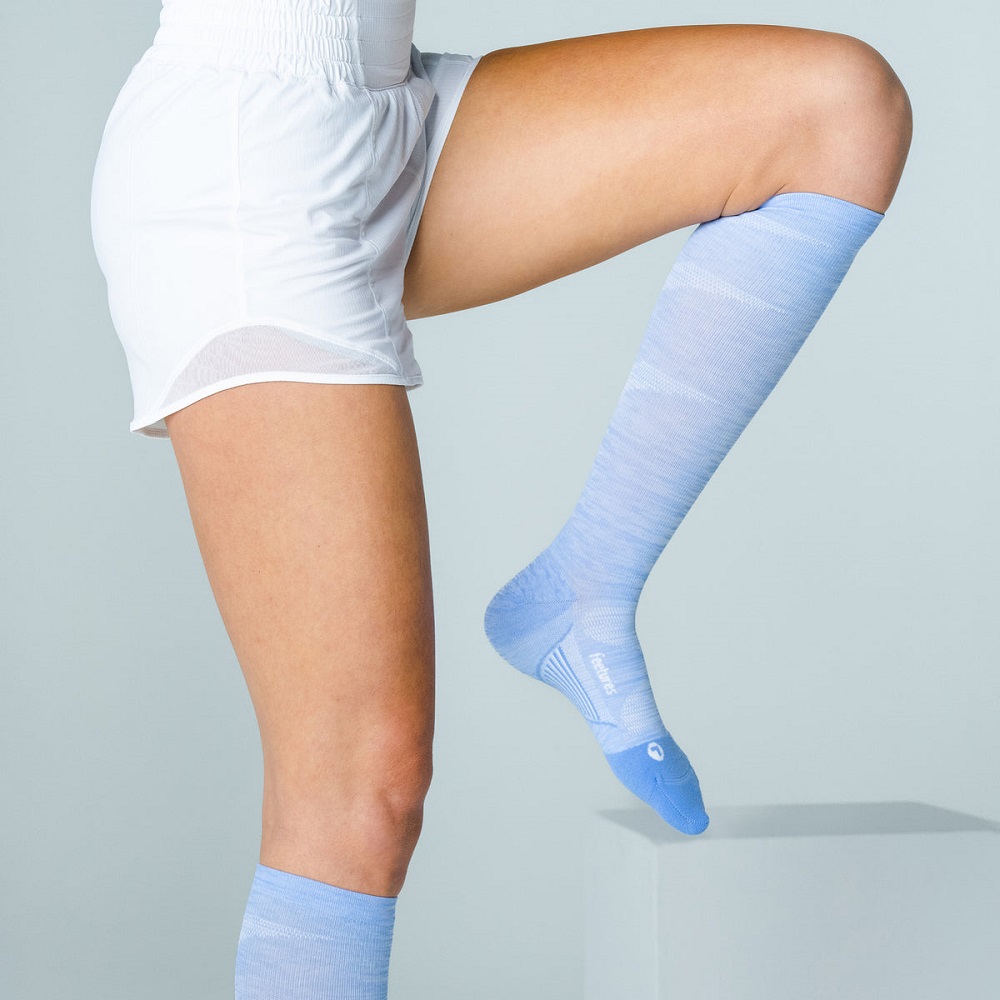
Frequently Asked Questions About Compression Socks
Do Compression Socks Have Any Side Effects?
Compression socks are generally safe when used correctly. However, certain side effects may occur:
- Skin Irritation: Tight socks can rub and cause irritation or redness on sensitive skin.
- Discomfort: Incorrect sizing may lead to pinching or excessive pressure.
- Restricted Movement: Extra-tight socks might limit flexibility during physical activities.
- Potential Circulation Issues: Rare cases of blood flow restriction may happen if socks are too tight.
To prevent side effects, ensure proper fit and follow usage instructions carefully.
How Long Should You Wear Compression Socks Each Day?
The duration of wearing best compression socks for women depends on your need. General guidelines include:
- For Daily Use: Wear them during activities or long periods of sitting or standing.
- For Recovery: Use them after workouts for a few hours to speed up healing.
- Medical Needs: Consult a specialist; wearing socks all day or overnight may be recommended.
- During Travel: Use them throughout flights or long trips to reduce swelling.
Avoid exceeding recommended usage unless directed by a healthcare professional.
When Should You Avoid Wearing Compression Socks?
best compression socks for women are not suitable for everyone. Avoid use in cases like:
- Skin Conditions: Open wounds or skin infections may worsen with tight garments.
- Advanced Circulation Disorders: Severe arterial issues can be aggravated by compression.
- Extreme Sensitivity: Allergies to materials like spandex or nylon may cause discomfort.
- Unsupervised Medical Use: Compression levels above 30 mmHg should be worn under medical guidance.
Consult a doctor if you’re unsure about your suitability for compression socks.
